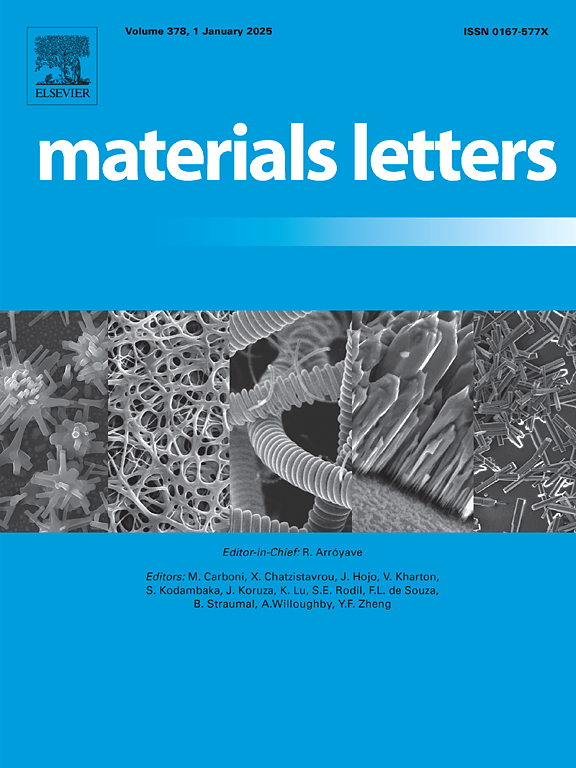Z-scheme BiOBr/NH2-MIL-125(Ti)异质结增强光催化脱除NO
IF 2.7
4区 材料科学
Q3 MATERIALS SCIENCE, MULTIDISCIPLINARY
引用次数: 0
摘要
采用原位沉淀法制备了BiOBr/NH2-MIL-125(Ti) (BNM)二元异质结光催化剂,增强了光催化脱硝性能。结果表明,BNM-20对NO的降解效率为68.96%,远高于纯BOB(6.47%)和NM-125(Ti)(29.9%),且在5个循环中保持稳定。这是由于NM-125(Ti)的多孔结构增强了活性位点和光收集,而z型异质结促进了载流子分离,协同提高了BNM的光催化活性。此外,通过ESR和原位FT-IR探讨了光催化去除NO的机理。本研究为设计高效稳定的光催化脱除NO的z型异质结光催化剂提供了有效策略。本文章由计算机程序翻译,如有差异,请以英文原文为准。

Z-scheme BiOBr/NH2-MIL-125(Ti) heterojunction for enhanced photocatalytic NO removal
A binary BiOBr/NH2-MIL-125(Ti) (BNM) heterojunction photocatalyst was prepared by in-situ precipitation method for enhanced photocatalytic NO removal. The results showed that BNM-20 achieved a NO degradation efficiency of 68.96%, far exceeding pure BOB (6.47%) and NM-125(Ti) (29.9%), while maintaining stability for five cycles. This is due to the porous framework of NM-125(Ti) enhancing active sites and light collection, while the Z-scheme heterojunction promotes carrier separation, synergistically improving the photocatalytic activity of BNM. In addition, the mechanism of photocatalytic removal of NO was explored through ESR and in-situ FT-IR. This study provides an effective strategy for designing Z-scheme heterojunction photocatalysts for efficient and stable photocatalytic removal of NO.
求助全文
通过发布文献求助,成功后即可免费获取论文全文。
去求助
来源期刊

Materials Letters
工程技术-材料科学:综合
CiteScore
5.60
自引率
3.30%
发文量
1948
审稿时长
50 days
期刊介绍:
Materials Letters has an open access mirror journal Materials Letters: X, sharing the same aims and scope, editorial team, submission system and rigorous peer review.
Materials Letters is dedicated to publishing novel, cutting edge reports of broad interest to the materials community. The journal provides a forum for materials scientists and engineers, physicists, and chemists to rapidly communicate on the most important topics in the field of materials.
Contributions include, but are not limited to, a variety of topics such as:
• Materials - Metals and alloys, amorphous solids, ceramics, composites, polymers, semiconductors
• Applications - Structural, opto-electronic, magnetic, medical, MEMS, sensors, smart
• Characterization - Analytical, microscopy, scanning probes, nanoscopic, optical, electrical, magnetic, acoustic, spectroscopic, diffraction
• Novel Materials - Micro and nanostructures (nanowires, nanotubes, nanoparticles), nanocomposites, thin films, superlattices, quantum dots.
• Processing - Crystal growth, thin film processing, sol-gel processing, mechanical processing, assembly, nanocrystalline processing.
• Properties - Mechanical, magnetic, optical, electrical, ferroelectric, thermal, interfacial, transport, thermodynamic
• Synthesis - Quenching, solid state, solidification, solution synthesis, vapor deposition, high pressure, explosive
 求助内容:
求助内容: 应助结果提醒方式:
应助结果提醒方式:


